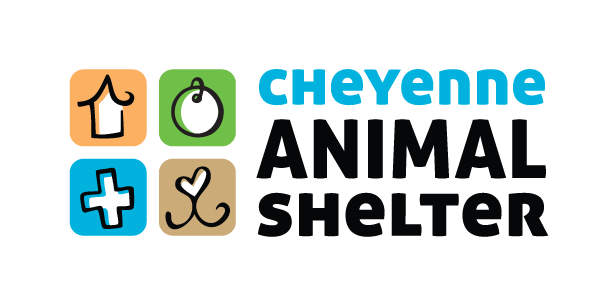Community Cat Initiative Grows to Address Free-Roaming Challenge
Written by: Britney Tennant, Cheyenne Animal Shelter CEO
We called her Violet.
At somewhere near 16 years old, she was brought to the Cheyenne Animal Shelter by someone claiming to have found her as a stray. Calm, confident, and affectionate, Violet gave every sign that she had once known love. We suspected she probably belonged to the very person who brought her in. Unfortunately, it’s not uncommon for people to surrender their pets this way—labeling them as strays—when they are unable or unwilling to wait for a surrender appointment or seek necessary veterinary care.
In Violet’s case, she was emaciated and had a mass in her ear that had ruptured and bled down the side of her face. Stray or not, Violet required immediate care. In 2023, the Shelter was fortunate to partner with a graduate student intern from Colorado State University’s (CSU) Professional Science Master’s program in Zoo, Aquarium, and Shelter Management. This unique academic program prepares students for leadership in the animal welfare field, and our collaboration allows these students to design capstone projects around the Shelter’s evolving needs.
With over 2,000 cats entering the Shelter annually—and an estimated 30,000 kittens born in Laramie County, each year—managing free-roaming cats has long been a key part of our mission. Thanks to the partnership with CSU, our Community Cat Initiative has grown in both scope and impact. Under the umbrella of our Animal and Community Health program, the Community Cat Initiative offers a comprehensive set of tools to address the challenges of free-roaming cats. These include:
Low-cost spay, neuter, and vaccination programs for feral and free-roaming cats, often supported by residents who care for local colonies.
Trap-Neuter-Vaccinate-Return (TNVR): a humane, life-saving option for undersocialized or stray but otherwise healthy cats.
Community education about TNVR, the science behind population control, and responsible reunification efforts.
“Found Kitten” education to support fostering, socializing, and adopting orphaned kittens.
Working cat placements for unsocialized cats who cannot be returned to their original environment but still deserve safe, purposeful lives.
Advocacy for public policies that align with best practices in community cat management and ensure public funds are used responsibly.
The Shelter defines community cats as any loosely owned, outdoor-living cat. This includes familiar terms like stray cat, feral cat, barn cat, alley cat, and street cat. These animals can be friendly or fearful, healthy or sick, sterilized or not. Some have spent their entire lives outside and, in the right conditions, can live full, healthy lives.
Free-roaming cats are part of every community, and animal shelters play a critical role in managing their numbers. Services like TNVR not only reduce the number of unowned cats on our streets but also create meaningful public health benefits.
By humanely trapping, sterilizing, vaccinating, and returning these cats to their territories, we help stabilize and gradually reduce the population. This prevents the birth of thousands of kittens and curbs the spread of disease. Fewer cats competing for resources also leads to a decline in nuisance behaviors like mating yowls, spraying, and fighting—improving quality of life for people and animals alike.
Vaccination plays a key role in maintaining and improving public health, shielding not just the cats but also protecting local families and pets from preventable illnesses. Proactive cat management also reduces the risk of zoonotic diseases—those that can pass from animals to humans—such as toxoplasmosis, rabies, and ringworm.
These efforts aren’t just compassionate—they’re cost-effective. Communities that consistently implement TNVR see long-term reductions in animal intake at shelters and lower overall costs for animal control and care. As stewards of both public resources and private donations, the Cheyenne Animal Shelter is committed to these proven strategies.
That said, we never lose sight of the individual lives behind the numbers. Once an animal is in our care, we provide support tailored to that animal’s unique needs.
Violet came home with me.
After a visit to our clinic, the mass in her ear was removed. But we soon discovered she had advanced dental disease, which likely contributed to her emaciation. Too weak to undergo further procedures, we focused on palliative care—antibiotics, pain management, and a warm, quiet place to rest.
In our home, Violet found comfort. She spent most days curled up in a fluffy bed. One afternoon, I wrapped her in a blanket and held her in a sunny window as she purred in my arms. Watching her daily habits, we saw signs of kidney failure. Blood work confirmed it.
Violet passed away, quietly and gently, in my arms, about two weeks after arriving at the Shelter. I believe she was a loved cat her entire life, and I hope she knew she was loved at the end, too. We often provide this kind of care—for animals whose stories are mostly behind them. But I can’t help but wonder whether Violet could have stayed in her home, in comfort, if more resources had been available to help her earlier.
The Community Cat Initiative is one small step toward that better future—for Violet, for her neighbors, and for all of us.

